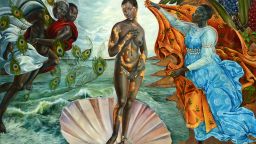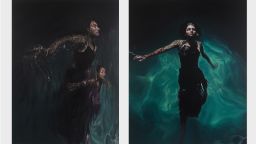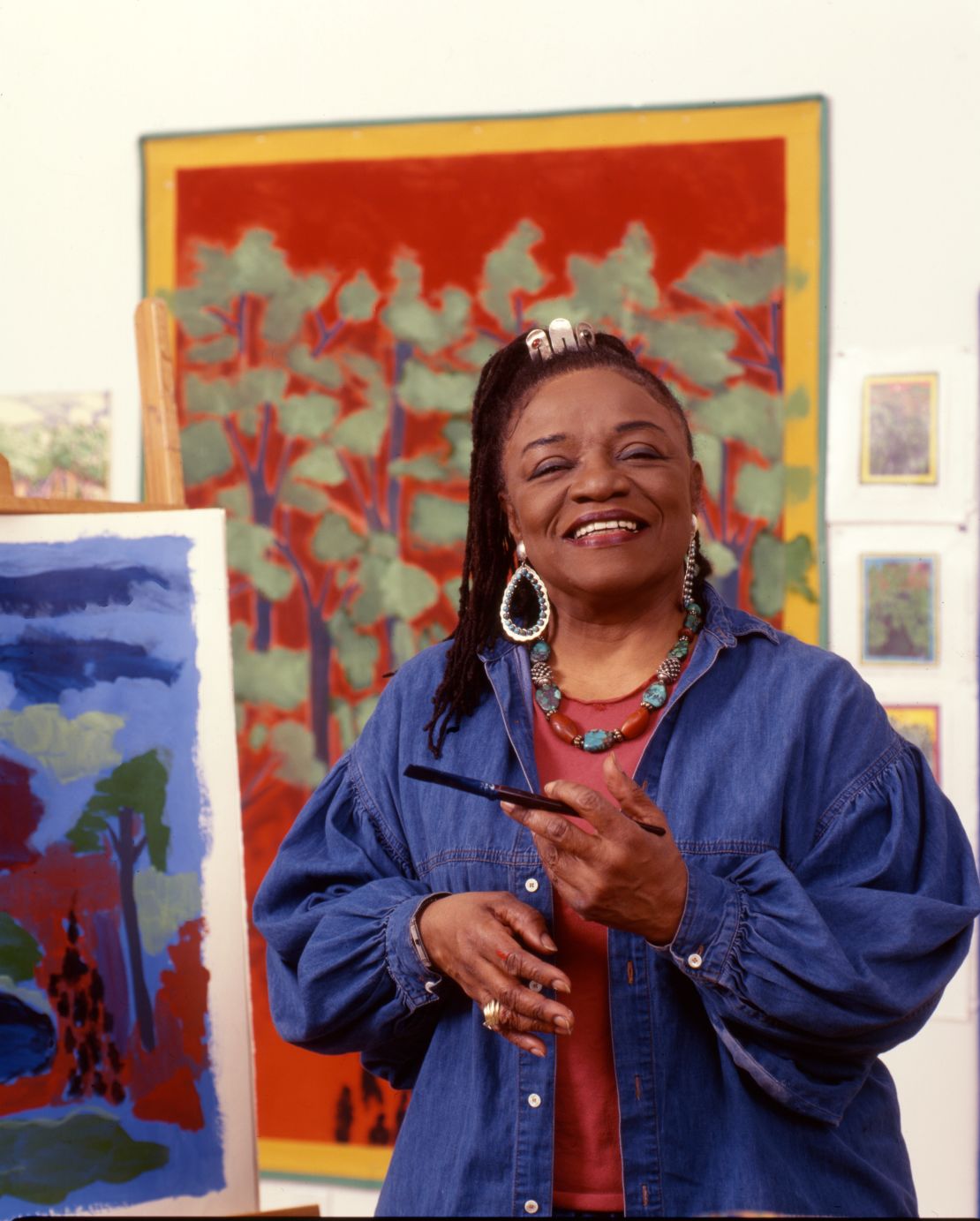
(CNN) — Faith Ringgold, the pioneering artist and author best known for her narrative quilts that interwove art with activism, has died at 93. Ringgold’s death, at her home in New Jersey on Saturday, was first reported by the New York Times.
“Faith leaves behind an impactful legacy of activism and advocacy for diversity and inclusion that has left a lasting mark on the art world, inspiring countless others to use their voice as a tool for social change,” said Dorian Bergen, President of ACA Galleries, which had represented Ringgold for nearly three decades, in a statement provided to CNN. “We will miss her deeply, and remain committed to continuing this legacy by sharing her work, philosophies, and life with the world.”
Ringgold, born in 1930 in Harlem during the Harlem Renaissance, drew inspiration from the tumultuous social realities she lived through. As a student, her formal initiation in the arts was almost curtailed by the City College of New York’s regulations of the time, which restricted women to specific majors — art not being one of them. However, Ringgold’s adamancy led her to strike a deal with a school administrator: Her art studies were contingent upon primarily enrolling in the school of education, where women were allowed.
After earning her bachelor’s degree in fine art and education in 1955, Ringgold began teaching art in public schools while developing her own art. She later received a master’s degree in art from City College in 1959. Her early work was influenced by civil and racial unrest, and had patent and profound political and social tones.
Between 1963 and 1967, Ringgold portrayed fraught race relations in America in a series of paintings titled “The American People Series.” The series’ final painting, “American People Series #20: Die,” is a vivid critique of the violent riots of the Civil Rights era. The painting, arguably the series’ most famous, gorily depicts a group of men, women and children brutally attacking one another. It is now part of the Museum of Modern Art’s permanent collection.
“I became fascinated with the ability of art to document the time, place, and cultural identity of the artist,” she told the Museum of Modern Art. “How could I, as an African American woman artist, document what was happening around me?”
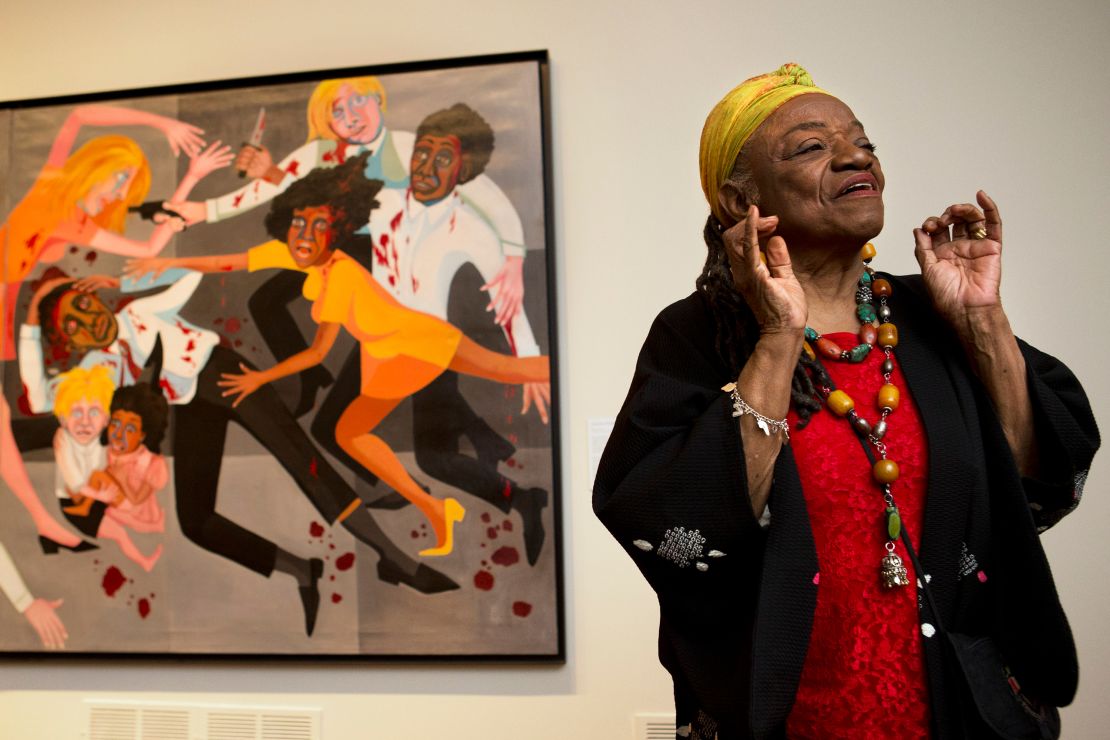
Ringgold’s early work did not enjoy much success at the time, driving the mother of two to take her activism to the streets for causes such as women’s representation — especially of Black women — in mainstream art exhibitions and collections. In 1970, Ringgold was arrested and charged with desecrating the American flag for co-organizing the “People’s Flag Show,” an exhibition protesting against the Vietnam War, and for artists’ First Amendment right to use the flag as material.
“They didn’t keep me in for long because the media was watching,” she told the New York Times of her sentencing.
Around the same time, Ringgold began incorporating new materials into her art. She experimented with sculpting in wood and clay, but the dust triggered her asthma and forced her to shift to more forgiving materials, particularly fabric. Having explored global artistic mediums such as African textiles and Tibetan tapestries known as thangka, the latter inspired the medium she became synonymous with: quilts.
In 1980, Ringgold collaborated with her mother, Madame Willi Posey, a fashion designer and seamstress, to create her first quilt, titled “Echoes of Harlem.” Ringgold wove the lives of African Americans and Black women into her quilts, which she referred to as paintings made “in the medium of quilting.” Her 1986 “Over 100 Pounds Weight Loss Performance Story Quilt” satirized the contradicting social expectations of women. Between 1990 and 1997, she created a 12-quilt series titled “The French Collection” exploring Black feminism themes through the story of a young Black woman in the 1920s who leaves Harlem for Paris to become an artist.
In recent years, many art institutions have curated retrospectives celebrating Ringgold’s trailblazing vision and her body of work. “I am fully aware of the attention I am now getting in the art world, and grateful,” Ringgold told the New York Times in 2019. “But I am also aware that it has taken a very long time.”
In 2019, a survey of Ringgold’s artwork was exhibited at the Serpentine in London, and in 2022, the New Museum in New York organized a retrospective titled “Faith Ringgold: American People.” The show made subsequent stops at the de Young Museum in San Francisco and the Museum of Contemporary Art Chicago, concluding this February.
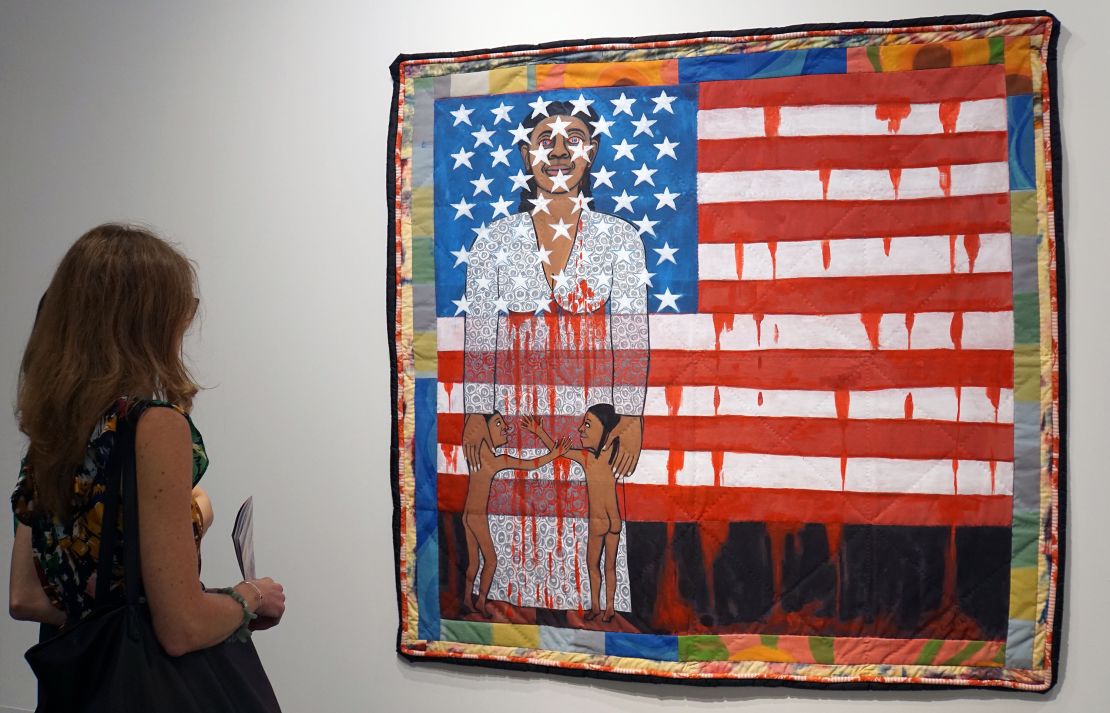
In addition to her artwork, Ringgold was a renowned children’s author. Several of her children’s books, such as the award-winning “Tar Beach” and “Dinner at Aunt Connie’s,” were based on her narrative quilts and vibrantly illustrated the complexity of African American life and history intended to uplift children.
“Tar Beach,” which chronicles the story of a young Black girl in Harlem during the Great Depression, has been criticized for its raw portrayal of African American life and faced attempts to have it removed from elementary school libraries.
“I hope people will be inspired by my art and find the courage as I did to do whatever they feel moved to do,” Ringgold told Wallpaper magazine in 2022, “It takes courage to be free and express one’s own vision. Everyone is important and has a unique story to tell.”
